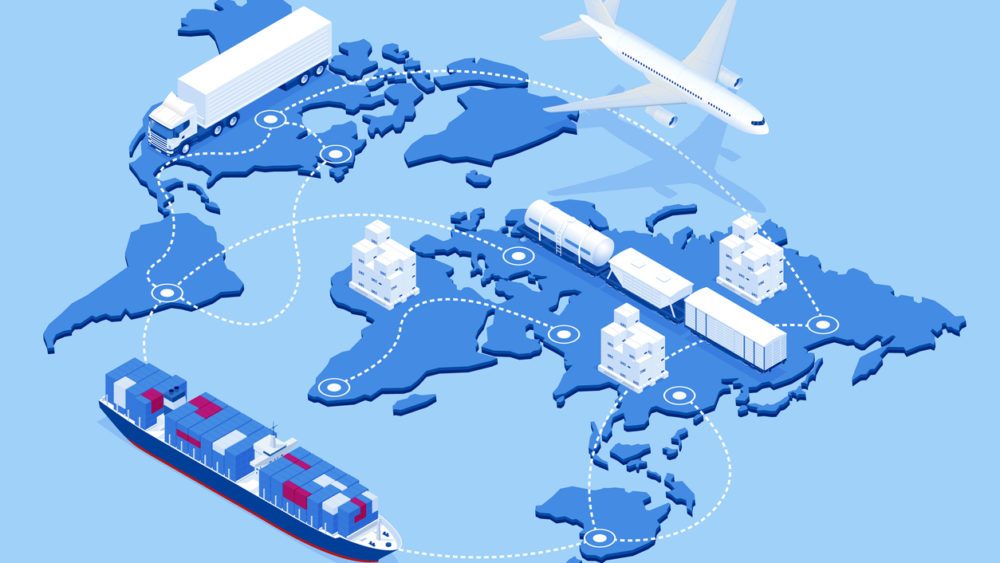
By Sanjay Ahire
Adam Smith wrote of the “invisible hand” that makes capitalism work. And the metaphor works. However, in the real, physical world, there is more than one hand involved.
I teach, research, and consult about the supply chain that keeps goods moving through our complex global economy, from raw materials to the finished product to the customer. Over the last two years, a lot of people who had never heard of this field have run into the problems that can crop up when this system gets out of balance.
Right now, many know “supply chain” simply as that thing that’s preventing them from getting the Christmas presents they want. But it’s a lot more complicated than that.
The success of any business, especially one selling manufactured goods, depends on creating the product, and ultimately getting it into the hands of the customer. If the business fails in doing those things, from start to finish, then marketing promises just remain promises. The customers don’t get what they want, and the business collapses.
A manufacturing organization has to design a good product, obtain the raw materials to produce it, manufacture it effectively, and supply it efficiently wherever and whenever the customer wants it, at a price and quality that meets the customer’s expectations. Anything that goes wrong in any of those dimensions is going to come back and bite.
With supply chains as long and complex as we have today, stretching around the globe, if something goes wrong at one stage in the process, everything gets held up. And recovering from that kink in the hose takes time – more time in some stages than in others.
That’s what we’ve seen over the last two years of the world dealing with the pandemic. (There have been other significant causes, such as natural disasters in China and elsewhere, but COVID is the largest and most obvious to people.)
All of this involves, at its core, two fundamental forces impacting supply chains: Supply and demand. It has been a perfect storm of these two forces getting out of balance, and global supply chains struggling to perform during this imbalance.
At this stage in our supply chain problem, the most relevant thing to remember is that demand can go up and down relatively quickly. Supply can take a lot longer to catch up with it.
At the start of the pandemic, things started shutting down all over the world – at both ends of the supply-and-demand dynamic. Factories stopped operating, so there was suddenly no supply of many manufactured products to be found, anywhere. Meanwhile, consumers stayed home. Not only were they not in the market for many things they usually bought, but many of them were out of work and had no money to spend on goods and services.
With everyone home, the demand for certain types of products and services disappeared. Others shot up. Airline travel was an example of the first phenomenon. So were restaurants, many of which ended up closing down for good. People weren’t traveling, and they were eating at home. On the other hand, demand for anything that contributed to making life at home more productive and comfortable shot up. That included electronic devices – from those that allowed many to work at home to game consoles and other entertainment technology – as well as home furnishings and such.
But while demand for the latter category climbed into the stratosphere, the supply was grounded. With factories closed down, the supplies of finished goods weren’t enough to meet even normal demands, much less satisfy this far greater hunger.
We hit a wall.
The manufacturing capacity, particularly in the Far East, from which so many products come, was just gone. And that takes time to come back. And remember, America has a huge trade imbalance. Even with things finished here, we’re relying on a long “supply” chain. There’s hardly a single manufactured product that we make completely in this country. The elements for a Boeing jetliner can come from as many as 44 countries.
No matter what politicians and diplomats have to say, or what policies they enact, China and the United States are economically joined at the hip. And at the start of the pandemic, there were significant lockdowns in that part of the world.
Eventually, things started looking up in the wealthier countries, especially as effective vaccines came into play. Consumers of manufactured goods started feeling safer to go out and work and otherwise engage in the world – and the demand for all kinds of goods went back up with a vengeance.
But at the other end of the chain, the warehouses were empty, and it would take a long time – is still taking a long time – to catch up to that demand.
Even when the supply started to catch up, there was another problem in the chain – logistics. It does no good to manufacture any number of attractive goods if you can’t get them to the customers demanding them. Over the last four or five months, that has been the greater problem.
Products roll off the assembly lines in the Far East and arrive at ports. Ships fill up with containers. They cross the Pacific, and end up waiting off shore in a long queue at Long Beach and Los Angeles ports. And they can’t unload fast enough to keep up with that insatiable demand.
President Biden tried to address that by opening up the ports to operate 24 hours. And that helped, but only partly.
Why? Because you need to load the goods onto trucks. And you might have the trucks, but who is going to drive them from the ports to the distribution centers? We have a drastic shortage of truck drivers in this country right now. We’re about a million short of what we currently need.
Why are there so few drivers, still? At the start of the pandemic, many left the industry. Meanwhile, the driving schools were closed, and it can take six to eight weeks to train a new driver. Not to mention the fact that the distribution centers are short of employees as well, so even if a truck takes goods to the warehouse, it has to wait to unload. So, it is a problem of not having the right resources in the right amount at the right time at the right place!
There’s another problem: So much of the industry in this country had been operating “lean” for several decades, ever since the “Toyota Way” became popular worldwide back in the ‘80s. Manufacturers stopped stockpiling raw materials, ordering them “just in time.” This was very efficient, as long as there were no kinks in the supply chain. Now, it’s a problem.
Businesses have realized they need to stock up on more of what they need to make their goods. But now is not the time to do that, because everyone is still ramping up. Later, we will see whether habits change.
Another thing to watch is whether we see “reshoring” of American industries. In the 1990s and 2000s, everybody wanted to go to China. But it turns out there are hidden costs to off-shoring: longer and more variable lead times; resulting in greater needs for pipeline and safety stocks. Still, most companies were in a “just-in-time” mood and “inventory” was a dirty word. Someone somewhere had to pay in the event of sudden shocks. Right now, it’s the customers. Companies are recognizing the pitfalls of going too lean – inventory and safety stocks are actually enablers of supply chain resiliency!
Smith’s invisible hand still works. Capitalism has tremendous capabilities and an extraordinary ability to adapt. The problems will be sorted out eventually. But it will take time. My expectation is that it will take at least until the middle of 2022 – maybe longer – for things to seem more normal again.
But it all depends… one thing we have realized: global supply chains are part of the larger ecosystem of business, social, and political realities. The global supply chains were built for efficiency for normal times (when supply met demand efficiently). The sudden and drastic shock to both demand and supply, as well as various countries’ inconsistent responses, have strained supply-chain capacities. New variants, and the public’s handling of the pandemic in terms of vaccinations and other protective measures, will determine when and how “normal” life will be. That will determine whether supply chains will recover, or continue to be strained despite best efforts.
Dr. Ahire is the Michael J. Mungo Distinguished Professor and co-director of the Operations and Supply Chain Center in the Management Science Department at the Darla Moore School of Business. He earned his Ph.D. in management science from the University of Alabama in 1992. He also holds a master’s degree in management studies and a bachelor’s degree in chemical engineering, both from the University of Bombay. He heads the unique industry-validated Sonoco-UofSC Lean Six Sigma Green Belt Certification initiative that has certified more than 1,400 graduates.



Comments are closed.